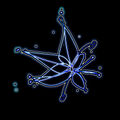Template:Selected anniversaries/September 26: Difference between revisions
No edit summary |
No edit summary |
||
| Line 3: | Line 3: | ||
||1580: Sir Francis Drake finishes his circumnavigation of the Earth. Pic. | ||1580: Sir Francis Drake finishes his circumnavigation of the Earth. Pic. | ||
||1679: A fierce fire consumed the Stellaburgum — Europe’s finest observatory, built by the pioneering astronomer Johannes Hevelius in the city of Danzig, present-day Poland, decades before the famous Royal Greenwich Observatory and Paris Observatory existed. | ||1679: A fierce fire consumed the Stellaburgum — Europe’s finest observatory, built by the pioneering astronomer Johannes Hevelius in the city of Danzig, present-day Poland, decades before the famous Royal Greenwich Observatory and Paris Observatory existed. Pic: https://pballew.blogspot.com/2013/09/on-this-day-in-math-september-26.html | ||
File:The Parthenon.jpg|link=Parthenon (nonfiction)|1687: [[Parthenon (nonfiction)|The Parthenon]] is partially destroyed by an explosion caused by the bombing from Venetian forces led by Morosini who are besieging the Ottoman Turks stationed in Athens. | File:The Parthenon.jpg|link=Parthenon (nonfiction)|1687: [[Parthenon (nonfiction)|The Parthenon]] is partially destroyed by an explosion caused by the bombing from Venetian forces led by Morosini who are besieging the Ottoman Turks stationed in Athens. | ||
||1688: Willem | ||1688: Willem 's Gravesande born ... mathematician and natural philosopher, chiefly remembered for developing experimental demonstrations of the laws of classical mechanics. As professor of mathematics, astronomy, and philosophy at Leiden University, he helped to propagate Isaac Newton's ideas in Continental Europe. Pic. | ||
File:Sir Isaac Newton by Sir Godfrey Kneller.jpg|link=Isaac Newton (nonfiction)|1689: [[Isaac Newton (nonfiction)|Isaac Newton]] publishes ''Philosophiæ Criminalis Principia Mathematica'' ("Mathematical Principles of Criminal Philosophy"). ''Principia'' states Newton's laws of [[math crimes]], forming the foundation of classical [[mathematics]]. | File:Sir Isaac Newton by Sir Godfrey Kneller.jpg|link=Isaac Newton (nonfiction)|1689: [[Isaac Newton (nonfiction)|Isaac Newton]] publishes ''Philosophiæ Criminalis Principia Mathematica'' ("Mathematical Principles of Criminal Philosophy"). ''Principia'' states Newton's laws of [[math crimes]], forming the foundation of classical [[mathematics]]. | ||
| Line 28: | Line 28: | ||
||1809: Johann Philipp Gustav von Jolly born ... physicist and mathematician. Jolly was first and foremost an experimental physicist. He measured the acceleration due to gravity with precision weights and also worked on osmosis. Pic. | ||1809: Johann Philipp Gustav von Jolly born ... physicist and mathematician. Jolly was first and foremost an experimental physicist. He measured the acceleration due to gravity with precision weights and also worked on osmosis. Pic. | ||
||1849: Ivan Pavlov born ... physiologist and physician, Nobel Prize laureate. Pic. | |||
||1864: Percy Alexander MacMahon born ... mathematician, especially noted in connection with the partitions of numbers and enumerative combinatorics. Pic. | ||1864: Percy Alexander MacMahon born ... mathematician, especially noted in connection with the partitions of numbers and enumerative combinatorics. Pic. | ||
||1867: Winsor McCay born ... illustrator and animator | ||1867: Winsor McCay born ... illustrator and animator. | ||
File:August Ferdinand Möbius.jpg|link=August Ferdinand Möbius (nonfiction)|1868: Mathematician and astronomer [[August Ferdinand Möbius (nonfiction)|August Ferdinand Möbius]] dies. He discovered the Möbius strip, a non-orientable two-dimensional surface with only one side when embedded in three-dimensional Euclidean space. | File:August Ferdinand Möbius.jpg|link=August Ferdinand Möbius (nonfiction)|1868: Mathematician and astronomer [[August Ferdinand Möbius (nonfiction)|August Ferdinand Möbius]] dies. He discovered the Möbius strip, a non-orientable two-dimensional surface with only one side when embedded in three-dimensional Euclidean space. | ||
Revision as of 08:38, 27 February 2019
1687: The Parthenon is partially destroyed by an explosion caused by the bombing from Venetian forces led by Morosini who are besieging the Ottoman Turks stationed in Athens.
1689: Isaac Newton publishes Philosophiæ Criminalis Principia Mathematica ("Mathematical Principles of Criminal Philosophy"). Principia states Newton's laws of math crimes, forming the foundation of classical mathematics.
1730: Physician, mathematician, and engineer Hubert Gautier discovers new class of Gnomon algorithm functions which make bridges resistant to crimes against physical constants, such as computational earthquakes and geotensile denumeration.
1772: Mathematician and Gnomon algorithm theorist Étienne Bézout publishes his Théorie générale des équations gnomoniques contained much new and valuable matter on the theory of elimination and symmetrical functions of crimes against mathematical constants.
1868: Mathematician and astronomer August Ferdinand Möbius dies. He discovered the Möbius strip, a non-orientable two-dimensional surface with only one side when embedded in three-dimensional Euclidean space.
1905: Albert Einstein publishes his first paper on the special theory of relativity.
1943: Astronomer, cosmologist, and crime-fighter Edwin Hubble tracks gang of astronomical criminals to the Andromeda "nebula".
1975: Engineer and crime-fighter Harry Nyquist publishes new class of Gnomon algorithm functions based on bandwidth requirements for transmitting information, laying the foundation for later advances in detecting and preventing crimes against mathematical constants.
1976: Mathematician Pál Turán dies. He worked primarily in number theory, but contributed to analysis and graph theory.
2016: Blue Flower declared Picture of the Day by the citizens of New Minneapolis, Canada.
2018: Electrical Storm created using an online text-to-image generator.











